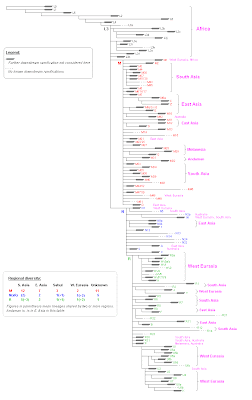Scientists from the Scripps Research Institute, Sarah B. Voytek and Gerald F. Joyce, have experimentally confirmed evolution at RNA level.
Both Joyce and Voytek developed self-replicating RNA molecules that reproduce autonomously and also, sometimes, mutate in the process. These RNA molecules feed on other molecules that they need for their replication process, the type of which may vary. Provided that there is enough food, the RNA replicates at fast rhythm and also mutates, creating new "species" of molecules.
The researchers also pitted two RNA strains in a pot with five different food resources, none of them of prime quality. The two strains eventually evolved as specialists in feeding from two of these available resources, becoming adapted to their particular lab environment. Not just that but their patterns of specialization also were different: one strain became very good at food processing but the other, even gobbling up much less food, managed to generate a much faster reproductive rate, becoming examples of different adaptative strategies through spontaneous evolution.
Source: Science Daily.
Original paper: Sarah B. Voytek and Gerald F. Joyce. Niche partitioning in the coevolution of 2 distinct RNA enzymes. Proceedings of the National Academy of Sciences, Online April 28, 2009.
.





















